So, you want bigger, stronger arms? Most people jump straight to biceps, but let's be real, the triceps are where a lot of that arm size actually comes from. They make up a huge chunk of your upper arm. If you're not working them right, you're missing out. And guess what? You don't need a fancy gym or a ton of equipment. Just a couple of dumbbells and this guide. We're going to talk about the best exercise for triceps with dumbbells to get you those results you've been chasing. It's not complicated, but it does take some know-how.
Key Takeaways
- Dumbbells are super flexible for arm workouts, letting you target muscles like the triceps effectively, whether you're at home or the gym.
- Exercises like the tricep kickback and overhead extension are great for really isolating and defining your triceps.
- The overhead dumbbell extension is particularly good for hitting the long head of the triceps, which adds a lot to arm size.
- When doing exercises like skull crushers, focus on using a weight you can control to avoid injury and make sure you're working all three parts of the tricep.
- To keep making progress, you need to gradually increase the difficulty of your workouts over time, and don't forget to let your muscles recover properly.
Understanding The Power Of Dumbbell Triceps Workouts
Benefits of Dumbbell Arm Training
Dumbbells are pretty great for arm workouts, honestly. They're super versatile, meaning you can do a ton of different moves with just a couple of weights. This makes them perfect whether you're working out at home with limited space or at a gym that's packed. Plus, they really let you feel the muscles working. You get a good range of motion with most dumbbell exercises, which means your triceps get worked through their full length. This can lead to better muscle growth and strength gains over time. Think about exercises like dumbbell kickbacks or overhead extensions; they really let you stretch and contract the triceps fully.
Enhanced Muscle Activation With Dumbbells
When you use dumbbells, you're often engaging more than just the target muscle. For triceps, this means you're not just hitting the main muscle but also the smaller stabilizing muscles around it. This kind of multi-muscle engagement can lead to more balanced arm development and better overall functional strength. It's like getting more bang for your buck with every rep. You can really focus on squeezing the muscle at the peak of the movement, which is something that feels really good and is probably good for growth too.
Addressing Imbalances With Unilateral Dumbbell Work
One of the best things about dumbbells is that you can work each arm separately. This is called unilateral training. We all have a dominant side, right? So, it's common for one arm to be a bit stronger or bigger than the other. Doing exercises one arm at a time, like a single-arm dumbbell kickback, helps you even things out. You can focus on making sure that weaker arm is doing its fair share of the work. This not only makes your arms look more symmetrical but also helps prevent injuries that can happen when one side is overcompensating for the other. It's a simple way to build more balanced and resilient arms.
Mastering The Dumbbell Tricep Kickback
The dumbbell tricep kickback is a fantastic exercise for really zeroing in on your triceps, that often-neglected muscle group on the back of your arm. It's not the flashiest move, but it's super effective for building definition and strength.
Proper Form and Technique for Kickbacks
Getting the form right is key here. You don't want to be swinging the weights around; it's all about control and feeling that squeeze in your triceps.
- Start Position: Grab a dumbbell in each hand. Hinge forward at your hips, keeping your back straight and a slight bend in your knees. Your upper arms should be parallel to the floor, with your elbows bent at about a 90-degree angle. Think of your torso as being almost parallel to the ground.
- The Kick: Keeping your upper arms locked in place, extend your forearms straight back, squeezing your triceps hard at the top of the movement. You should feel a distinct contraction.
- The Return: Slowly lower the dumbbells back to the starting position with control. Don't just let them drop.
The goal is to isolate the triceps. If you find yourself using momentum or rocking your body to lift the weight, it's a sign that the dumbbell is too heavy. Focus on the muscle doing the work.
Benefits of Tricep Definition
Why bother with definition? Well, it's not just about looks, though sculpted arms are pretty cool. Defined triceps contribute to a more balanced and athletic physique. This exercise helps to:
- Isolate the Triceps: It specifically targets the triceps, allowing you to build that muscle group without other muscles taking over.
- Improve Tone: Regular practice can lead to firmer, more toned arms, which many people find aesthetically pleasing.
- Boost Functional Strength: Stronger triceps help with everyday tasks that involve pushing or extending your arms, like carrying groceries or pushing open a door.
Targeting Triceps Isolation
This is where the kickback really shines. Unlike compound movements where multiple muscles work together, the kickback is designed to make your triceps do almost all the heavy lifting. By keeping your upper arms stationary and focusing on the extension of your forearm, you're directly engaging the three heads of the triceps. This focused attention is what helps build that detailed, sculpted look that many people are after. It's a great way to ensure that this specific muscle group gets the attention it deserves in your workout routine.
The Overhead Dumbbell Tricep Extension
Targeting The Long Head Of The Triceps
The overhead dumbbell tricep extension is a fantastic move for really zeroing in on the long head of your triceps. This is the biggest part of your triceps muscle, the one that gives your arm that full, horseshoe look when you flex. Because you're moving the weight overhead, you get a really good stretch on that long head, which is key for building size and strength. It's a bit different from other triceps exercises because of this position.
Weight Recommendations For Overhead Extensions
Figuring out the right weight is super important. You don't want to go too heavy and mess up your form, but you also need enough resistance to actually challenge your muscles. Here's a general idea:
| Experience Level | Weight Range (per dumbbell) |
|---|---|
| Beginner | 5-10 lbs |
| Intermediate | 10-20 lbs |
| Advanced | 20-30+ lbs |
Remember, these are just starting points. The goal is to pick a weight that lets you do 8-12 good reps with solid control. If you can easily bang out more than 12, it's probably too light. If you can't hit 8 with good form, it's too heavy.
Execution Tips For Maximum Engagement
To get the most out of this exercise and stay safe, pay attention to these points:
- Keep your elbows tucked in. Try to point your elbows forward, not letting them flare out to the sides. This keeps the tension right where you want it – on the triceps – and helps protect your shoulders.
- Control the movement. Don't just let the weight drop. Lower it slowly and feel the stretch in your triceps. Then, push it back up with purpose, squeezing your triceps at the top.
- Stabilize your core. Keep your stomach muscles tight throughout the exercise. This helps prevent your back from arching, which can lead to strain.
- Focus on the stretch. The overhead position allows for a great stretch. Make sure you're actually feeling that stretch at the bottom of the movement.
This exercise really shines when you focus on the eccentric part of the lift – that's the lowering phase. Slowing it down, maybe for 2-3 seconds, can make a big difference in how much your triceps feel worked. It's all about time under tension, not just how much weight you can move.
Whether you're using one dumbbell held with both hands or two lighter dumbbells, the overhead extension is a solid choice for building those horseshoe-shaped triceps.
Building Strength With Dumbbell Skull Crushers
Alright, let's talk about the infamous Skull Crusher. Don't let the name scare you; this exercise is a serious powerhouse for building up those triceps. It's a fantastic way to hit all three heads of your triceps, which is key for getting that well-rounded, strong arm look. When you do them right, you'll feel a deep burn that tells you they're working.
Engaging All Three Tricep Heads
This move is great because it doesn't just focus on one part of the tricep. It really gets into the lateral, medial, and long heads all at once. This kind of balanced work helps your arms grow evenly and makes them stronger overall. It's like giving your triceps a full-body workout, all from one exercise.
- Lateral Head: This is the one on the outside of your arm, giving it that horseshoe shape.
- Medial Head: Located underneath the other two, it's active in most arm movements.
- Long Head: The biggest of the three, running down the back of your arm.
Safety Precautions For Skull Crushers
Now, the name Skull Crusher isn't just for show; you do need to be careful. The biggest mistake people make is using too much weight and losing control. That's how injuries happen. Always pick a weight you can manage for the full set without compromising your form. Keep those elbows tucked in, pointing towards the ceiling, and avoid letting them flare out wide. This keeps the stress on your triceps where it belongs and off your shoulder joints. A stable grip is also super important; you don't want those dumbbells slipping.
Remember, the goal here is controlled movement. Think about slowly lowering the weight and then pressing it back up with purpose. It's not about how fast you can do it, but how well you can feel the muscle working through the entire range of motion. This controlled approach is what really builds strength and muscle over time.
Incorporating Into Your Routine
When you're planning your workouts, Skull Crushers fit in nicely. You can do them lying on a bench, similar to how you'd set up for a dumbbell bench press, or even seated. A good starting point is usually 3-4 sets of 8-12 repetitions. Don't be afraid to mix it up; maybe do them on a day you're also working on your biceps, or dedicate a specific arm day to them. Just make sure you're not overdoing it, especially when you're first getting used to the exercise. Listen to your body, and gradually increase the weight or reps as you get stronger.
Progressing Your Dumbbell Triceps Exercises
So, you've been hitting those dumbbell triceps exercises, and things are feeling good. That's awesome! But to keep seeing those gains, you can't just do the same thing forever. You gotta push yourself a little, you know? It's all about making your muscles work harder over time. This is where progressive overload comes in, and it's not as complicated as it sounds.
Choosing The Right Weight For Extensions
Picking the right weight for exercises like overhead extensions or skull crushers is pretty important. You don't want to go too heavy and risk an injury, but you also don't want to be so light that you're not really challenging your muscles. A good starting point is to pick a weight where you can complete your target reps with good form, but the last couple of reps feel tough. If you can easily bang out more reps than planned, it's probably too light. If you can't even hit the lower end of your rep range with decent form, it's too heavy.
Here's a quick way to think about it:
- Beginner: Focus on mastering the movement. Use a lighter weight and aim for 10-12 reps.
- Intermediate: Once you can hit 12 reps comfortably, it's time to think about increasing the weight. Aim for 8-10 reps with the new weight.
- Advanced: You might be looking at 6-8 reps with a challenging weight, really pushing the limits.
Progressive Overload Strategies
This is the heart of getting stronger. It means gradually increasing the demand on your muscles. There are a few ways to do this:
- Increase the Weight: This is the most obvious one. Once you can hit your target rep range for a few sets with good form, add a little more weight next time.
- Increase Reps: If you're not ready to add weight, try doing one or two more reps per set with the same weight.
- Increase Sets: Add an extra set to your exercise. If you were doing 3 sets, try 4.
- Decrease Rest Time: Shortening the rest periods between sets makes the workout more intense.
The Role Of Eccentric Control
This is a big one that a lot of people miss. The eccentric part of a lift is when the muscle is lengthening under tension – basically, the lowering phase. Focusing on slowing down this lowering phase can make a huge difference in how much your triceps grow and get stronger. Instead of just letting the weight drop, control it. Lower the dumbbell for a count of 2 or 3 seconds. This increases the time your muscles spend working and can lead to more muscle damage, which is what your body repairs and builds back stronger.
Think about it like this: the lowering part of the movement is where a lot of the magic happens for muscle growth. It's easy to just let gravity do the work, but actively controlling that descent is what really challenges the muscle fibers and signals them to adapt and get bigger and stronger. It's a simple change that can really boost your results without needing to constantly chase heavier weights.
Designing Your Ultimate Dumbbell Arm Routine
So, you've been hitting those dumbbell exercises for your triceps, and maybe your biceps too. That's awesome. But how do you put it all together so you're actually making progress and not just going through the motions? It's more than just picking a few exercises and hoping for the best. You need a plan, a structure that makes sense for your goals and your schedule.
Structuring A Weekly Workout Schedule
When you're planning your week, think about how often you want to hit your arms. For most people looking to build strength and size, hitting your arms directly twice a week is a good starting point. This gives your muscles enough stimulus to grow but also allows for adequate recovery time. You don't want to be doing the same thing every single day, that's a recipe for burnout and injury. Mixing up your routine can also help keep things interesting. Maybe one day you focus more on heavier, compound movements for your triceps, and another day you do lighter, higher-rep isolation work. It's all about finding that balance.
Here’s a sample split to get you thinking:
- Day 1: Chest & Triceps
- Day 2: Back & Biceps
- Day 3: Rest
- Day 4: Shoulders & Triceps
- Day 5: Legs
- Day 6: Rest
- Day 7: Rest
This is just an example, of course. You might prefer to do full-body workouts or a push-pull-legs split. The key is consistency and making sure you're not overtraining.
Combining Bicep And Tricep Dumbbell Exercises
It makes a lot of sense to train your biceps and triceps together, or at least on the same day. They're opposing muscle groups, meaning when one contracts, the other relaxes. Working them in the same session can be efficient. You can do a few sets of bicep curls, then move right into tricep extensions. This kind of pairing is common in many workout splits. Some people like to start with the muscle group they want to prioritize, while others prefer to get the 'harder' workout out of the way first. There's no single right answer here, it really comes down to personal preference and what feels best for your body. Just remember to use proper form for all your dumbbell exercises to get the most out of them.
Building impressive arms isn't just about doing a lot of exercises; it's about doing the right exercises, with the right intensity, and giving your body the right amount of time to recover and rebuild. Think of your workouts as the stimulus, but the actual growth happens when you're resting.
The Importance Of Recovery
Seriously, don't skip this part. Your muscles don't grow when you're in the gym; they grow when you're resting. That means getting enough sleep is super important. Aim for 7-9 hours a night. Also, proper nutrition plays a huge role. You need enough protein to repair and build muscle tissue. Hydration is key too. Think of recovery as an active part of your training, not just something that happens passively. This could include light stretching, foam rolling, or even just taking a complete rest day. Listening to your body is probably the most important recovery tool you have. If you're feeling overly sore or fatigued, it's okay to take an extra rest day or do a lighter workout. Pushing through constant exhaustion is how you get injured and set yourself back.
Want to build bigger arms? "Designing Your Ultimate Dumbbell Arm Routine" has the tips you need. Learn how to pick the right moves and reps to get the results you want. Ready to start sculpting? Visit our website for the full guide and more workout ideas!
Wrapping It Up
So, there you have it. We've gone over why dumbbells are pretty great for arm day, especially for those triceps. Remember those exercises we talked about, like the kickbacks and overhead extensions? They're solid choices for building up the back of your arms. Just make sure you're using good form, not trying to lift too much too soon, and giving your muscles enough time to recover. Consistency is key here. Keep at it, and you'll start seeing and feeling the difference in your arms before you know it. Now go get those gains!
Frequently Asked Questions
Why are dumbbells good for arm workouts?
Dumbbells are awesome because you can do tons of different moves with them, and they don't take up much space. This makes them great for working out at home or in a small gym. They help you work both arms evenly and can make your muscles grow stronger.
What's the best way to do a dumbbell tricep kickback?
To do a kickback, stand with a slight bend in your knees and lean forward from your hips, keeping your back straight. Hold a dumbbell in each hand with your upper arms still and parallel to the floor. Then, straighten your arms to kick the weights back, squeezing your triceps. Lower them back down slowly.
How do I do an overhead dumbbell tricep extension correctly?
Hold one dumbbell with both hands above your head. Keeping your elbows close to your ears, bend your elbows to lower the dumbbell behind your head. Then, straighten your arms to lift the dumbbell back up. Focus on feeling the stretch and squeeze in your triceps.
Are dumbbell skull crushers safe?
Skull crushers can be safe if you use the right weight and focus on good form. Keep your elbows pointing straight up and don't let them spread out. Lower the dumbbells slowly towards your forehead (hence the name!) and then extend your arms back up. Avoid using too much weight, which can cause injury.
How do I know if I'm using the right weight for dumbbell tricep exercises?
You should pick a weight that lets you do about 8 to 12 repetitions with good form. If you can easily do more than 12 reps, the weight is probably too light. If you can't do at least 8 reps with good form, it's too heavy. It's better to use a lighter weight and do the exercise correctly than to use a heavy weight and risk getting hurt.
How often should I work out my triceps with dumbbells?
You can work your triceps with dumbbells about 2 to 3 times a week. Make sure to give your muscles at least a day of rest between workouts so they can recover and grow stronger. Mixing up your exercises and focusing on good form will help you see the best results.
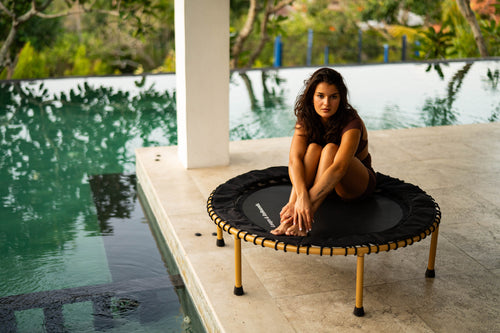






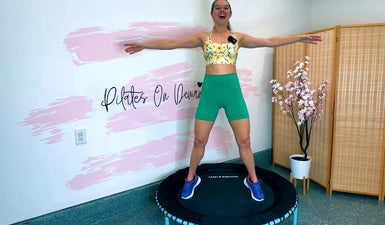
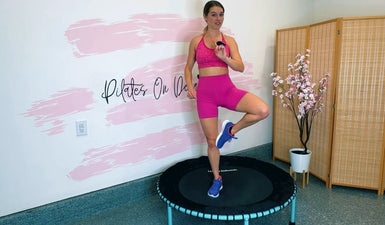
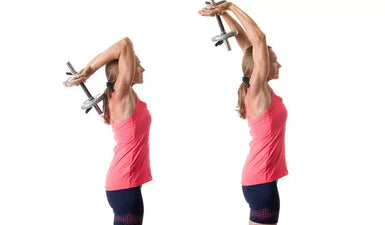
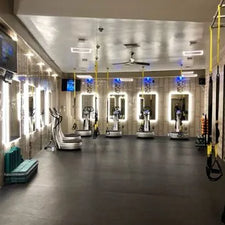

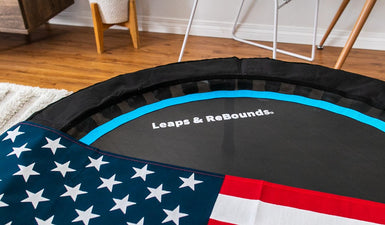
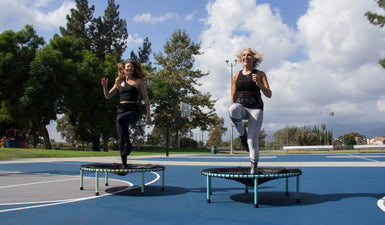

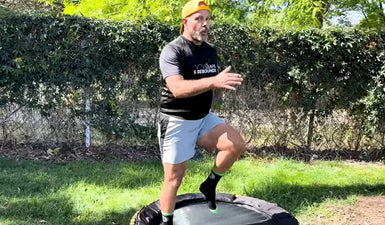








0 comments